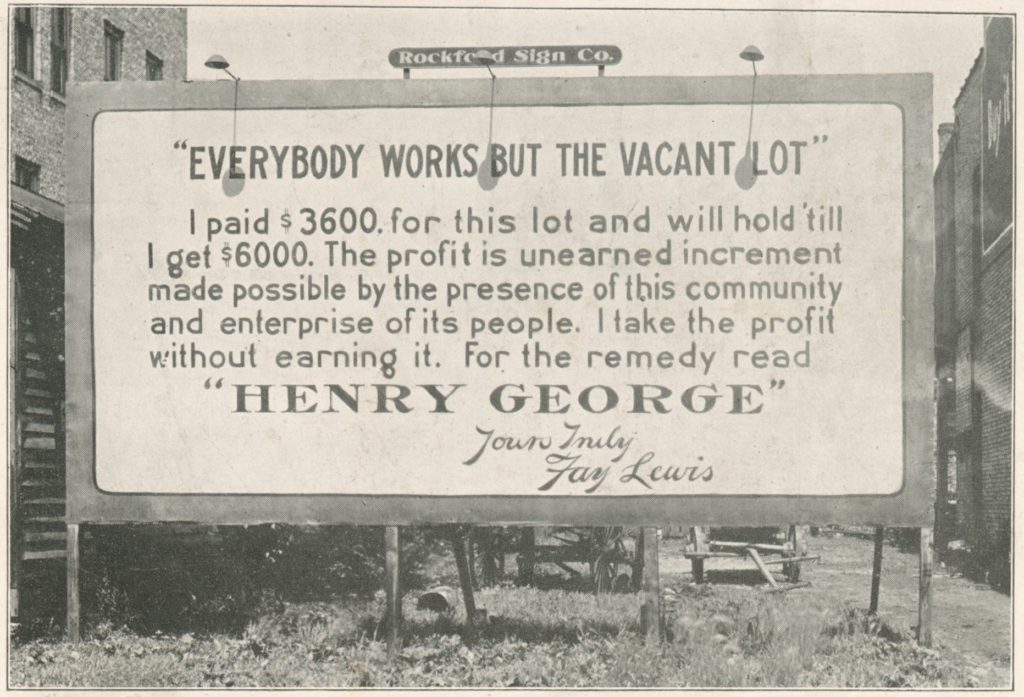COLUMN: Intersectional Environmentalist: Puvungna Victory, Oil Spill, and the Fight Against a Billionaire’s Rail Yard
16 minute readSurrounded by the 710, 405, 605, and 91 freeways and flanked by a trash incinerator, several oil refineries, and one of the busiest seaports in the world, Long Beach is impacted by a wide array of pollutants, some visible and others microscopic.
Long Beach’s history of redlining (starting in the 1940s) ensured that those who are living on the Westside, closest to major polluters, are more likely to be a person of color and/or lower income. Because of the toxic environment, living on the Westside means a life expectancy that’s approximately seven years shorter than those living in the eastern part of the city around El Dorado Park and Nature Center, where residents are much more likely to be white and relatively affluent. This discrepancy in life expectancy is just one disparity that becomes apparent when the dots are connected demographically.
“Intersectionality” (as coined by legal scholar Kimberle Crenshaw in 1989) serves as a lens or analytical framework with which we can assess the way different demographics are impacted and help “demarginalize the intersection” of race, class, and gender. Issues with our environment intersect with these issues as well as immigration status, physical ability, and more. Arguably, there are many layers to the ways these issues overlap—ways that are visible, as well as ways that take more effort to understand when one is not directly impacted.
These connections are being made on a grassroots level but are often ignored by city leaders in ways that are obvious and others that are more oblique. Fore example, Long Beach is on Tongva land but the local university’s references to the 49ers and former Prospect Pete mascot honor the people that came searching for gold, property, and other personal wealth in 1849, without recognizing how they contributed to the further erasure of the Indigenous caretakers of the land and their ways. The development of so-called Long Beach meant the decimation of sacred sites and ultimately led to desert-like droughts in what were once abundant wetlands. These are all issues that still impact us today.
Currently, wetlands to the south of us are in danger due to a major oil spill; local Indigenous groups (Tongva, Acjachemen, and other neighbors and allies) have been battling Cal State Long Beach to get them to stop desecrating what remains of their holy land; California finally recognized that outlawing the Indigenous practice of controlled burns was a mistake, and we are in a housing crisis that greatly impacts people of color and low-income folks.
Rising rents and rental properties getting snapped up by big corporations in order to take advantage of increasing market rates are displacing longtime residents who can no longer afford to live here. The impact of the city’s 2012 Downtown Plan—which had no provisions for affordable housing and was approved when Mayor Robert Garcia was the councilmember for District One—has violently shifted the demographics and skyline of the city’s core. And a lack of adequate housing to fit the needs of the community also exacerbates environmental issues in ways that are seen and unseen.
The title of this column, “Intersectional Environmentalist,” is aspirational, but it is the intention. In the months to come, I will share any news related to regional environmental justice and/or sustainability that I come across or am sent by the community. I will also strive to connect our readers with the land protectors, anti-racist climate change activists, students, workers, and other community folk who are doing work around environmental health and sustainability, as well as feature opportunities to take action. And going forward, we will forgo the long intro and get straight to the news!
GOOD NEWS

Legal Victory Ensures Puvungna Now Protected in Perpetuity!
After a Cal State Long Beach construction crew was caught dumping trash-laden mounds of dirt on the sacred site in December 2019, local Indigenous groups pursued legal action. (This was not the first time legal action was needed to prevent CSULB from disrespecting the holy grounds. In the ‘90s, a lawsuit was also successfully filed to prevent the development of a shopping mall.) We published an in-depth report last fall regarding the 30-year, multi-generational struggle, and I’m pleased to update our readers that the judge has now deemed that Puvungna will be protected indefinitely. Friends of Puvungna celebrated on the corner of Beach Drive and Bellflower Boulevard the last weekend in September and spent the following weekend celebrating their 24th annual Ancestor Walk.
MIXED NEWS
#WeAreJustTryingToBreathe: Community and EPA Push Back Against 710 Expansion
Twenty years ago, a proposal to expand the 710 Freeway was released. Almost immediately, members of the community started organizing against it. They were determined to stay involved in the process so that it would not tear their neighborhoods apart or bring even more pollution to an already overburdened area. The fight continues to this day as Caltrans and LA Metro continue to push for the freeway’s expansion.
The Coalition for Environmental Health and Justice (CEHAJ) was formed to further strengthen community opposition to the problematic proposals put forth and to get involved in creating an equitable alternative. CEHAJ includes East Yard Communities for Environmental Justice (EYCEJ), Long Beach Alliance for Children with Asthma (LBACA), Communities for a Better Environment (established in 1978), Earthjustice, Legal Aid Foundation of Los Angeles, Long Beach Residents Empowered (LiBRE), Natural Resources Defense Council (NRDC), and Urban & Environmental Policy Institute (UEPI) at Occidental College.
The coalition and the communities they represent are urging Caltrans to recognize and take action on last year’s commitment towards equality because the neighborhoods in danger under the proposal, as per usual historically speaking, are mostly Black and Latino.
There are three alternatives to the original expansion project that Caltrans and LA Metro considered: “no build,” “5c,” or “7,” with the latter two being near zero emissions (NZE) and zero emissions (ZE) respectively. Caltrans’ proposal of Alt 7 still included displacement, freeway widening, and no targeted local hire, all of which are demands included in the Community Alternative 7 (CA7) developed by CEHAJ. LA Metro’s vote to go forward with 5C was struck down by the U.S. Environmental Protection Agency this past spring, which was celebrated by CEHAJ.
In May 2021, CEHAJ reported, “Region 9 of the United States Environmental Protection Agency (EPA) recently advised Caltrans and LA Metro that they cannot proceed with the project without doing a quantitative analysis under the Clean Air Act called a ‘hotspot’ analysis.”
Due to this pushback from the EPA, Caltrans and LA Metro have put their plans for expansion on pause for now. Organizers remain vigilant and are continuing to push for CA7, which includes the following seven elements: No widening of the general-purpose lanes, a comprehensive public transit element, mandatory Zero-Emission Corridor (ZEC), Public Private Partnership (PPP) of ZEC, LA River improvements, a comprehensive pedestrian and bicycle element, and community benefits like targeted hiring practices.
CalEnviroScreen is a screening tool used to help identify communities disproportionately burdened by multiple sources of pollution and with population characteristics that make them more sensitive to pollution. To learn more about CalEnviroScreen, go to the OEHHA website.
BAD NEWS

Company Responsible for Catastrophic Oil Spill in Pacific Ocean Given 20-Year Pipeline Lease by Port of Long Beach in 2020
On Oct. 2, a pipeline owned by Houston-based oil company Amplify Energy was reported to be leaking five nautical miles off the coast of Huntington Beach. The leak spilled thousands of gallons of crude oil into the ocean and has caused dead birds and fish to wash up on the shore.
Tomisin Oluwole
Face the Music, 2022
Acrylic on canvas
24 x 36 inches
Click here to check out our interview with Tomisin Oluwole, a literary and visual artist based in Long Beach.

Instead of gunking up our site with ads, we use this space to display and promote the work of local artists.
“Currently the oil slick plume measures an estimated 5.8 miles long and runs from Huntington Beach pier to Newport pier,” according to a public advisory released by Huntington Beach officials on Oct. 3. Damage to the pipeline caused anywhere from 24,696 to 131,000 gallons of oil to spill into the ocean, according to officials.
Orange County Supervisor Karina Foley (no relation to the author) reported that the spill “infiltrated completely” Talbert Marsh Ecological Reserve, 25-acres of protected wetlands home to 80 species of birds and other notable wildlife and considered one of the best wetland restoration projects in the area. The wetlands and marshes are notoriously hard to clean up after an oil spill, and the full extent of the damage remains to be seen.
On Tuesday, it was discovered that one of the container ships backlogged by the port (due to the pandemic and supply chain issues) idling near Huntington Beach likely pierced the pipeline (which was likely already damaged) upon dropping their anchor and then dragged it. Governor Gavin Newsom declared a state of emergency in Orange County that same day.
Congressman Alan Lowenthal, whose 47th district covers Long Beach and parts of Orange County, released a statement calling for the phasing out of offshore drilling.
“As long as these platforms and pipelines remain, our coastal communities remain under threat from potential disasters like we are now seeing, ” Lowenthal said. In May, Lowenthal co-sponsored the North Pacific Ocean Protection Act and the American Coasts and Oceans Protection Act, which he says “together would stop future drilling off of the Pacific Coast.”
The LA Times reported on the controversy surrounding the oil spill, questioning whether it was known by local officials and/or Amplify Energy on Friday evening or Saturday morning that one of their pipelines was leaking, and noting that Amplify Energy Chief Executive Martyn Willsher has been “evasive” about the timeline.
Far from a progressive approach in regard to the current climate change crisis, Capital and Main also reported that a year ago, Long Beach gave Amplify Energy a 20-year pipeline lease.
The lease, signed by the Port of Long Beach, extends through 2040 when the pipeline will be 60 years old, which may “conflict with state, national and international climate goals to reduce greenhouse gas emissions via fossil fuel combustion,” according to the report.
On Friday, the Coastguard pointed out that marine life had been growing on the ruptured pipe in a way that showed it had been damaged months ago, if not longer. The last time the pipeline was inspected was October 2020, so damage to the pipe could be a year old.
The California Department of Fish and Wildlife is asking residents not to attempt to help the animals affected by the spill and instead to report animal sightings to the Oiled Wildlife Care Network at 877-823-6926. The phone number for Amplify Energy, should you wish to voice your concern as a “stakeholder” in the area, is 832-219-9001. The Long Beach chapter of the international youth-run Sunrise Movement is organizing around this issue as well as Protect the Long Beach / Los Cerritos Wetlands and Surfrider Foundation.
Fight Against Billionaire’s Proposed Rail Yard Flanking Cabrillo High School Not Over Yet
Warren Buffet’s proposed BNSF railyard in Wilmington, referred to as the Southern California International Gateway (SCIG), has been opposed by residents and members of EYCEJ for a decade. In 2016, Long Beach, the local school district, and other stakeholders stalled the project with a successful lawsuit. According to City Attorney Thomas Perkin’s press release, “In a 200-page ruling, Judge Goode held that the City of Los Angeles and its Port failed to perform adequate environmental analysis before approving the massive SCIG railyard, which would be constructed adjacent to many residents, schools and businesses in West Long Beach.”
Buffet hasn’t given up on his SCIG expansion dream in Wilmington (right near Cabrillo High School off Pacific Coast Highway and Santa Fe Avenue), and so the environmental review process has begun again. According to a statement from community watchdog group EYCEJ (mentioned above in the section about the 710 expansion), “The Revised Draft EIR is inadequate, and relies on outdated data and assumptions. New developments over the last 10 years require the Port to conduct an updated environmental assessment of the SCIG project that takes into account current conditions and more robustly analyzes the proposed project’s impacts on the surrounding communities.”
Majority of Plastic in the Recycling Bin is Not Actually Recyclable
A report was released by Global Alliance for Incinerator Alternatives (GAIA) on July 28 that compared the recycling habits of five major cities, including Long Beach. The takeaway was that 64% of your plastic is not recyclable. Instead of tossing it in the bin, if possible, try up-cycling or reusing instead. No space? You might be surprised who needs your empty containers. Search for a Buy Nothing group in your neighborhood or join community groups like this one and give your stuff away instead of throwing it in the bin.
OPPORTUNITIES FOR ACTION

Community Compost
Composting is a great way to repair the soil in a town surrounded by toxic offenders, but it isn’t always an easy feat, especially for apartment dwellers, who may not have access to a yard. LB Community Compost is a “community-based group of volunteers nourishing local soil & recycling residents’ food scraps into rich soil amendment.” You can bring your food scraps on Fridays from 8 a.m. to 9:30 a.m. to 2714 California Ave., or from 11 a.m. to 1 p.m. to the Downtown Long Beach Farmer’s Market.
800+ Members of Grocery Co-Op Seeking Capital Funding and More Owners
After seven years of spreading the word, the Long Beach Grocery Co-op signed up their 800th person during a membership drive last month. Unfortunately, they previously had a deadline of October 2020 to reach that milestone and when they did not, a deal for the proposed location fell through. Now at 807 and counting, the next steps are to determine a new viable location and to start a capital campaign in order to be able to build the store, hire employees, and acquire products.
Veteran firefighter Damon Lawrence has helped lead the charge in growing the co-op and is on the Board of Directors along with Kat McIver, co-owner of the coffee shop Wide Eyes Open Palms, as well as several other Long Beach community members. According to its bylaws, the organization’s mission is to “provide a customer-owned food cooperative offering natural, local, and organic products at a reasonable price while advocating for environmentally sustainable practices and supporting food justice principles.” There is a one-time fee of $250 to become a member, which can be paid in monthly installments and comes with perks. However, you will not have to be an owner/member to shop at the LB Grocery Co-op when the brick-and-mortar finally exists.
Community involvement in this column is welcomed and encouraged. Please send any related tips, reports, or suggestions to erin@forthe.org.


 erin@forthe.org
erin@forthe.org




